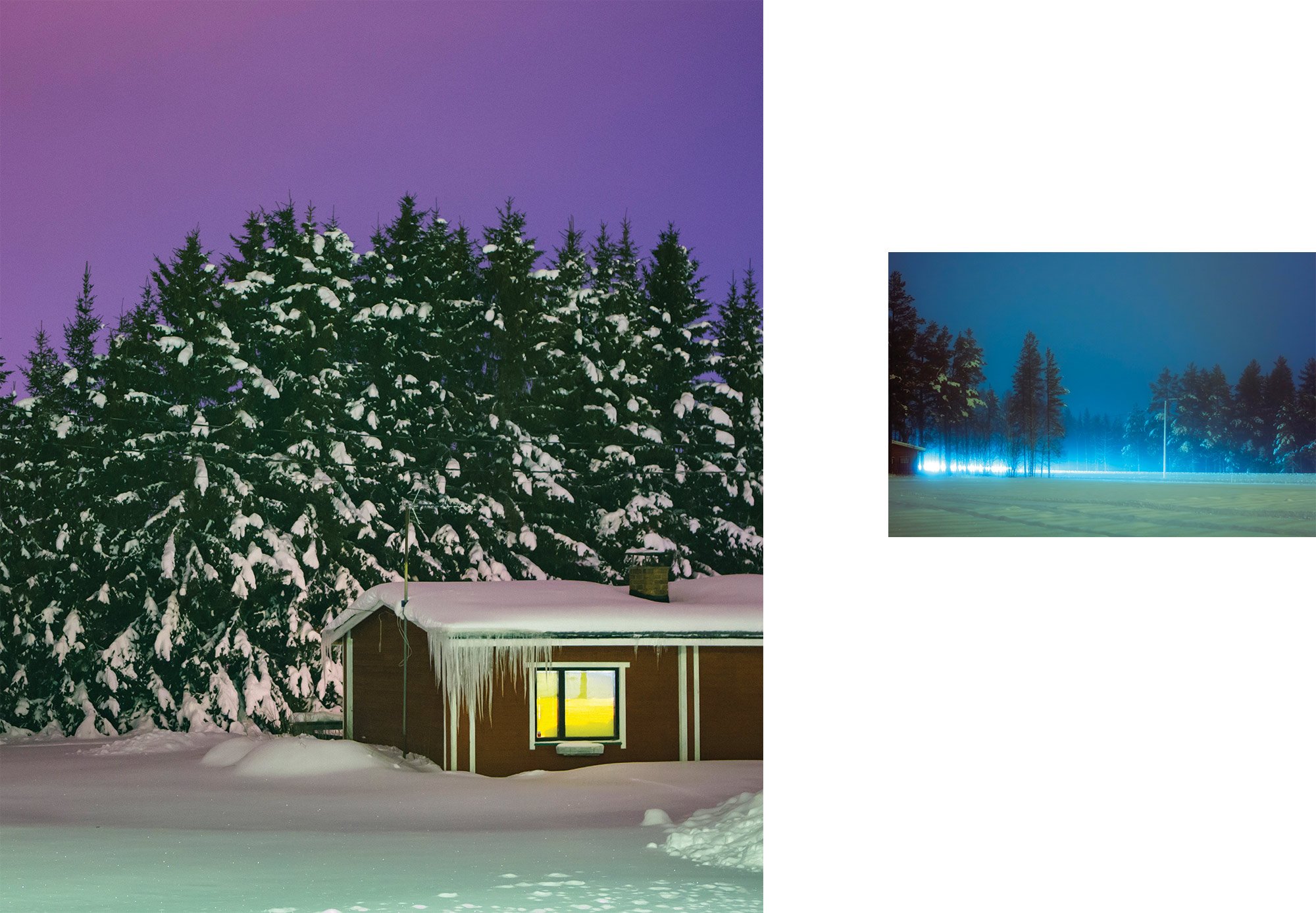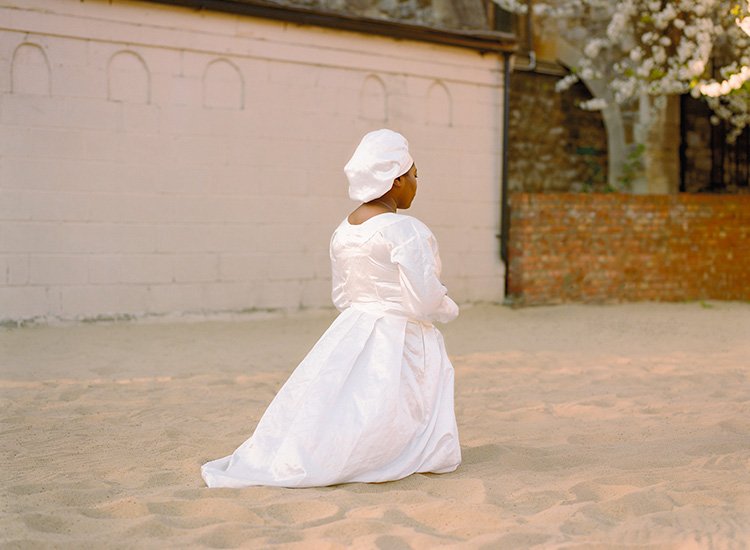Why We Create — 02 Maria Lax
Why We Create is a series of five interviews with global photographers in an attempt to discover the deeper layer, drives, and motivation behind their work. We strive to bring forward the moment of realization, in which the meaningfulness of the profession is unveiled, leaving no doubt in the chosen path. In this collaboration with Open Doors Gallery, London, and the founder Tom Page we decided to speak with selected artists presented on the platform. Offering two perspectives, the photographer’s and Tom’s, who carefully chooses art to highlight,
we gain a better understanding of what attracts a viewer in an image and why the specific moment becomes immortalized. Maria Lax is a London-based photographer, originally coming from Finland. Maria’s background is in cinematography, which has a major influence on her work interpreted in colors, contrasts, and experiments with a camera. Masterfully presenting an unfamiliar universe, unrecognizable scenery coming as a merge of realism and technique, Maria offers a rare angle to view the unfolding scenario through her eyes.
In collaboration with Open Doors Gallery
@odtakeovers @odprintsales
The photographs we discuss in the interview are also available as prints in the Open Doors Gallery website.
We speak with Max about large-scale printing and custom framing, which he recently started to examine. We discuss the Helter Skelter photograph and the main shift in Max’s technique and approach. Max speaks in depth about his latest series, A Big Fat Sky, and the desire to get closer to his childhood memories going back to the British East Coast, “I saw a kid around the same age that I was when we used to go on holidays there. He had the same mullet I used to have and seemed transfixed by the water, looking for crabs.”
Heavenly Fire #1
How did you meet Maria Lax? What photo by Maria do you find as the most memorable?
I have been working with Maria for some years now, and over that time, it has been fascinating seeing her career develop. Beyond the awe-inspiring cinematic scenes she captures and the obvious effect her work has had on the wider Instagram community, I believe it's her work ethic that sets her apart from many other photographic artists working today. Coming up with creative solutions on commercial shoots, discussing her work eloquently with press interviews, and then managing the less romantic side, the admin: applying to endless awards, competitions, and festivals around the world. It's this trait that has enabled her to break through against the backdrop of what has been a challenging year for us all!
Maria Lax’s background is in cinematography. She uses a lot of those tools in her still work. She uses lighting, lens filters, coloured gels, long exposure, and camera settings to manipulate the shot in-camera and to get the image as close to the end result. She doesn't add or take away from the image but does enhance colours and contrast depending on the outcome she wants. Maria likes to shoot real places but aims to ensure that they appear almost unreal. The image that I feel captures this best is Heavenly Fire #1. The composition is surreal and simultaneously alarming. The longer you look, the more you see. With the Aurora Borealis pulsing green in the far background. Stars stretching up above. Then a line of marching silhouetted trees behind the glowing front row. Almost like a stage set. For me, it's fantastic storytelling too. I've always imagined that it's a car's rear brake lights that are responsible for this striking red glow. Why have they stopped? Who are the off-stage protagonists? These are the purposefully unanswered questions left dangling by Maria that keep me gripped to this print.
— Tom Page, Founder and Director of the Open Doors
‘It’s a strange year to bring out your first book as I did because I haven’t really gotten to meet with people face to face. However, the online community has been hugely communicative and supportive, and we’ve now sold out the first edition, which is great.’
Why We Create?
Hi Maria, happy to have you join the project Why We Create. Tell about your preparations for the upcoming Photo London running online until the 18th October. What is the concept you’re presenting?
Preparations for Photo London have been running incredibly smoothly because Tom from Open Doors has made a lot of the work - and he made an excellent selection of the work we present, which I agreed with. I’m presenting my work Some Kind of Heavenly Fire, which is a story about a small town (my hometown) with a big secret. It explores a painful past and supernatural occurrences that happened in the 1960s and is a hugely personal project to me.
How is the pandemic affecting the exhibitions you have on your list in 2020?
The pandemic has really changed all the plans I had for this year. A lot of festivals and exhibitions have been postponed, cancelled, or have been moved online - and so have all the talks. It’s a strange year to bring out your first book as I did because I haven’t really gotten to meet with people face to face. However, the online community has been hugely communicative and supportive, and we’ve now sold out the first edition, which is great. I won the InCadaqués festival in Spain, and I was meant to attend it this week but ended up cancelling because of Corona and travel rules. But these are all small things compared to what is happening, so I’m happy with virtual travel for the time being.
‘I think it’s a mix of emotions, but I’d say curiosity is the leading force, and a desire to see something that doesn’t exist yet. I’ve always been a bit of a daydreamer, or in a world of my own, so I just like to think of themes and stories that would be interesting to explore.’
‘The feeling I get when I know the work is going somewhere and when I’m shooting is this deep gut feeling that is a mix of nostalgia and a feeling that in my work, I have arrived in a place that is familiar to me yet distant.’
What do you think is the most profound emotion that you experience, which drives you to continue working on personal projects and create?
I think it’s a mix of emotions, but I’d say curiosity is the leading force, and a desire to see something that doesn’t exist yet. I’ve always been a bit of a daydreamer, or in a world of my own, so I just like to think of themes and stories that would be interesting to explore. The work is not so much about documenting anything objectively, but it’s about subjective truth I find in the things I look out for. I like to create alternate worlds and have an element of escapism in my work, especially during the time we live in right now.
How would you describe the feeling you have while searching for the topic and eventually sharing your photos with the viewer?
The feeling I get when I know the work is going somewhere and when I’m shooting is this deep gut feeling that is a mix of nostalgia and a feeling that in my work, I have arrived in a place that is familiar to me yet distant. It just feels ‘right’.
‘’I’ve basically realised that being an artist is about getting up in the morning and just doing the thing that needs to be done. Sounds simple, but there are so many artist myths in the world still present that it took me quite a while to get to this point.’
What are the two episodes you can share with us, which were the breakthroughs for you in the realization of your voice and vision - of becoming an artist, a photographer?
I think voice and vision are things that will continuously evolve. But I would say when I started shooting Some Kind of Heavenly Fire, there was a moment I took a few shots that I really liked, and they went hand in hand with the story that I wanted to tell - something just clicked at that moment, and I realised I was doing the right thing, and that photography was the right path for me that allows me to tell the stories that I want to tell.
The second realisation has been quite a recent one, and it’s not so much about voice or vision, but it’s about how to continue with my work and how my process of working should evolve. As photography has become how I make a living, I realised I needed to become much more disciplined - to have a method that doesn’t rely on creative inspiration or any fleeting, abstract things like that. I now have a system of researching with writing, then visually, and then I make a plan to execute the project technically. It does mean I shoot less on the fly and on a whim, and I’ve now become quite organised about the way I work and almost strict in my method. But it all helps me to create even when I’m not feeling creative and gives me something to lean into on a bad day on set or otherwise. I’ve basically realised that being an artist is about getting up in the morning and just doing the thing that needs to be done. Sounds simple, but there are so many artist myths in the world still present that it took me quite a while to get to this point.
One of your photos is featured under the theme The Road Trip at Open Doors, a call for the creators to reminisce about an escape, an adventure they had. What was the magic of the place in the photograph Heavenly Fire #17, so you decided to capture this moment?
The petrol station was a place that was very close to my parents' house, so I’ve known it since I was pretty young. I would cycle or walk past it often, and so when I was back in Finland one autumn, I noticed the weather getting foggy and decided to drive to the place to photograph it. It wasn’t so much of an adventure to someplace new, but an adventure to my past and memories of my childhood, of passing the place many times in the dark autumn and winter evenings when I was a kid. I wanted to give it a magical glow to share the nostalgia and mood, but also the certain eeriness it has, being surrounded by tall trees on a quiet road.
Did it bring you closer to the answers you were searching for and a deeper understanding of the stories in your grandfather’s book?
My grandfather’s book gave me inspiration and new enthusiasm to photograph my hometown and familiar places, and this is one example of how it turned out. It is a slightly surreal shot on purpose because I like to capture real places so that they seem unreal.
Explore the series ‘Why We Create’
Kent Andreasen
We start our conversation with Kent from the technical aspect and his decision to start shooting on a large camera format, later we move towards discussing…
Read More
Max Miechowski
We speak with Max about large-scale printing and custom framing, which he recently started to examine. We discuss the Helter Skelter photograph and…
Read More
Benedetta Ristori
Through her work, we discover the most intimate feelings and thoughts of people on which Benedetta sheds light through careful work with the…
Read More
Berber Theunissen
In this interview, we speak with Berber about one of the main themes in her work, motherhood, and touch on the intrinsic changes in the professional and…













